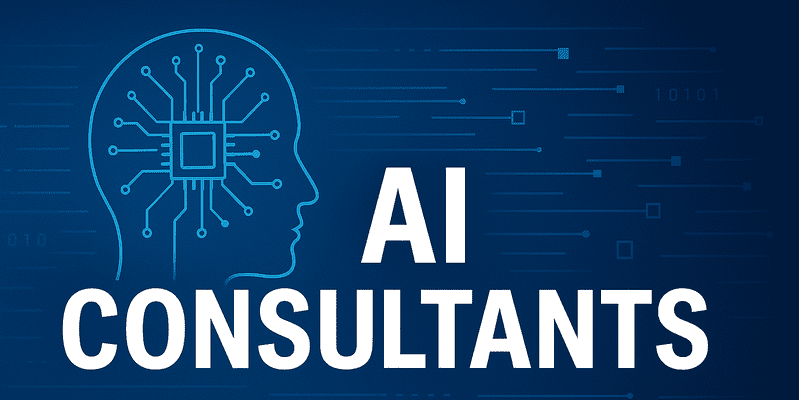What to Look For in an AI Consultant Partner: An Evergreen Brief

Solutions Review Executive Editor Tim King offers an evergreen brief on what to look for in an AI consultancy. This AI consultancy selection guide was inspired by a recent Insight Jam Session featuring a collection of Solutions Review experts like Robert Eve, David Linthicum, Gregory Lewandowski, and Luca Collina.
Selecting an AI consultancy isn’t about hiring people who can “sprinkle AI” on your roadmap; it’s about finding a partner that diagnoses real business problems, sequences change intelligently, and returns measurable value. Tools will keep changing, but the constants are problem selection, data readiness, culture, governance, and adoption. The best firms start there—and they will even tell you when AI is the wrong answer for a given problem. That is the core signal of a trustworthy advisor.
A strong consultancy anchors on problem–solution fit rather than hype. They can reframe your goals in business terms—revenue lift, cost reduction, risk mitigation, or experience improvement—and then map those to AI patterns or, when appropriate, to simpler alternatives. They will also recognize “non-problems” where AI would be a misapplication. From day one, they look at your data before they talk about models: access, integration, quality, lineage, privacy, and governance. The pattern is consistent across successful programs: quick wins are pursued without mortgaging the long-term data foundation, and model promises are never made before a short, blunt assessment of the data reality.
AI Consultancies in Action
Because technology is often the easiest part, the firms that succeed put people and culture at the center. They plan for enablement, communication, and behavior change, and they budget real time and attention for it—often two to five times the effort spent on pure model or infrastructure work. They lower fear, build “muscle memory,” and normalize experimentation with a crawl-walk-run cadence. That cultural embedding shows up in small, observable habits: clear owner roles, recurring show-and-tell sessions, office-hours for frontline users, and a playbook that makes adoption the definition of done rather than “model shipped.”
Responsible AI is treated as a default setting, not a compliance afterthought. Credible firms surface ethical risks, bias considerations, model security, data protection, auditability, and human-in-the-loop decision points before any build. They avoid selling AI primarily as a headcount-reduction lever because they understand how badly those programs tend to backfire—legally, reputationally, and operationally. In practice, they define model success with a broader evaluation harness: not just accuracy, but robustness, stability, fairness, and real-world failure modes, with rollback paths if behavior drifts.
Trust & Independence
Trust and independence are non-negotiable. Good partners act like designated buzzkills when necessary. They will tell your sponsors what they don’t want to hear—about data debt, missing talent, unrealistic timelines, or misaligned incentives—and they will disclose their vendor relationships plainly. You should expect them to be stack-agnostic in the moments that matter, to choose the least complex viable solution, and to put your long-term interests ahead of short-term bookings. Their communication will be plain-language, executive-friendly, and transparent about uncertainty and trade-offs, because AI deals in probability, not guarantees.
Matching on stage, pace, and style is just as important as capability. If you are early and still testing hypotheses, look for generalists who are comfortable with ambiguity, rapid experiments, and use-case triage. If you are scaling, prioritize data engineering rigor, MLOps and LLMOps maturity, model monitoring, platform reliability, and cross-functional rollout. Enterprises pursuing wider transformation should expect portfolio rationalization, cost control, risk governance, and program-level change management. Pace also matters: moving quickly is essential in AI, but moving in the right order is decisive. The healthiest programs validate a narrow use case, reinforce data foundations, and only then expand to adjacent processes or business units.
Think in Phases
It helps to think in phases. A short assessment phase reframes the business problem, articulates a value hypothesis, inventories data realities, and sets success metrics and risks. A focused “prove value” phase executes a narrow use case with the lightest viable data pipeline and a sandboxed model tied to a pilot user group. The “make it real” phase productionizes with versioning, observability, access controls, incident response, user training, and support. Finally, the scale phase builds shared components, governs a portfolio of use cases, manages cost and risk, and institutes periodic model audits and refreshes. The outcome of each phase should be durable assets you keep even if you pause: cleaned and organized datasets, evaluation harnesses, runbooks, and trained internal champions.
You can learn a lot from what top firms refuse to do. They will not treat every problem as an AI candidate. They won’t skip a data assessment or promise performance before seeing the pipes. They won’t bury responsible-AI concerns or bulldoze your stack choices because of a partner quota. They won’t measure success by a flashy demo; success is defined as in-workflow impact—time saved, error reduction, conversion lift, risk avoided—with adoption metrics to match. They’ll also propose clear exit ramps, stage-gated statements of work tied to outcomes rather than effort, and “kill or pivot” checkpoints after the first phase.
Due diligence becomes straightforward once you know what good sounds like in the room. Ask which problems in your portfolio are not good AI candidates and listen for precise reasons such as sparse data, weak ROI logic, or simpler heuristics that would work better. Ask for adjacent case studies with before-and-after metrics, time to first outcome, and lessons learned—including what they would do differently now. Ask how they will evaluate your data before committing to model performance; you should hear a concise diagnostic of sources, joins, quality, drift, access, and governance. Ask how they prevent “model shipped, value missed,” and expect a concrete adoption plan, process redesign, embedded integration, and training.
On Use-Case Specificity
Ask about their responsible-AI guardrails for your specific use case; the best will present a small but serious risk register and human-oversight design. Finally, ask where they have financial incentives with vendors and how they stay objective; complete disclosure and real examples of recommending against a partner stack are good signs.
There is also a pragmatic distinction between early wins and scale. Early on, generalists who can trace value from idea to P&L shine because they cut through ambiguity, create momentum, and find first signal fast. At scale, depth in data engineering, governance, monitoring, and reliability becomes decisive, because the physics of production—latency, cost, drift, access, privacy, audit—will make or break the program. A capable consultancy knows when to change modes, and they help you change with them.
Perhaps the most important way to avoid “shiny win, zero value” is to demand that every deliverable lands inside a real workflow. If a recommendation does not change a decision, speed up a task, reduce an error, shorten a queue, or make an employee’s day meaningfully better, it is theater. Tie payments to stage-gates with outcome evidence—pilot metrics, adoption rates, stability over a defined period—and require a knowledge-transfer plan that makes you less dependent on the consultancy over time, not more.
The Bottom Line
The bottom line is simple: pick for judgment, not just Java. The right AI consultancy selects the right problems in the right order, grounds everything in your data realities, treats people and process as first-class citizens, builds safety and ethics in from day one, and earns trust by being objective when it costs them.
For even more on what to look for in an AI consultancy, consult the experts via Insight Jam‘s Jam Session on YouTube:
Note: These insights were informed through web research using advanced scraping techniques and generative AI tools. Solutions Review editors use a unique multi-prompt approach to extract targeted knowledge and optimize content for relevance and utility.



